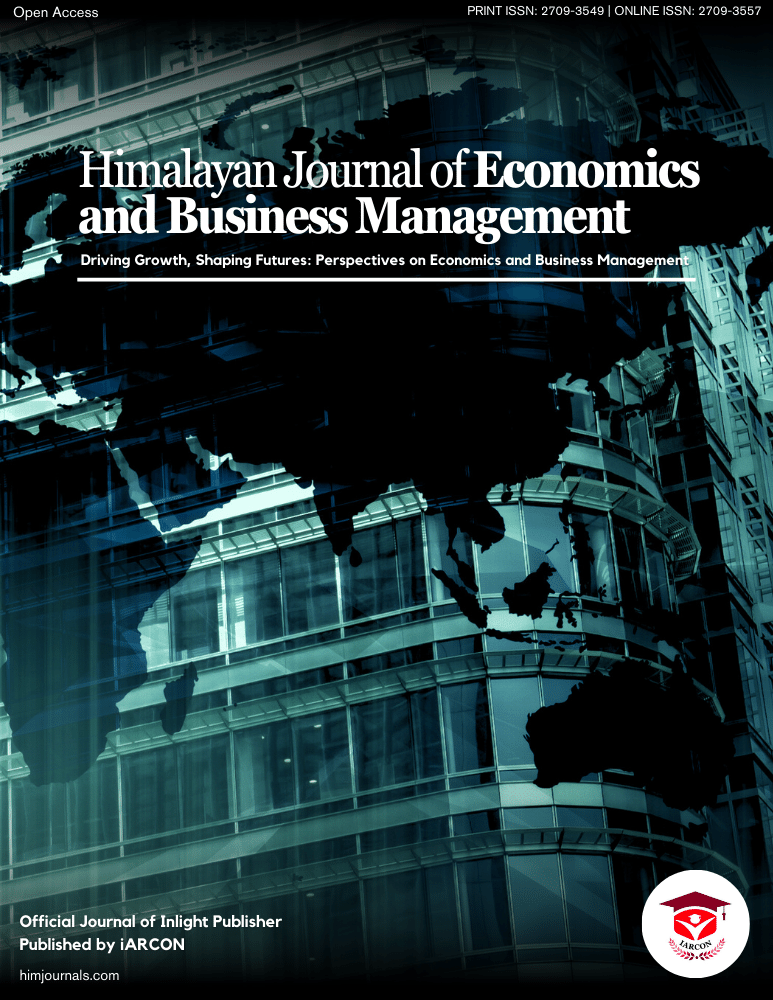Giao, H.N.K. "Customer Satisfaction towards ATM Services: A Case of Vietcombank Vinh Long, Vietnam." Journal of Asian Finance Economics and Business, vol. 6, no. 1, 2019, pp. 141–148.
Gronroos, C. "A Service Quality Model and Its Marketing Implications." European Journal of Marketing, vol. 18, no. 4, 1984, pp. 36–44.
Hair, J.F., et al. Multivariate Data Analysis. Prentice-Hall International, Inc., 1998.
Nesrin, O., et al. "Customer Satisfaction in the Banking Sector: The Case of North Cyprus." Procedia Economics and Finance, vol. 39, 2016, pp. 870–878.
Duong, T.N. "Research on Customer Satisfaction about Service Quality at Joint Stock Commercial Bank for Foreign Trade of Vietnam Tra Vinh Branch." Master’s thesis, Tra Vinh University, 2015.
Tran, H.H. "Research Paper on Factors Affecting Customer Satisfaction Using ATM Card Services of Joint Stock Commercial Bank for Foreign Trade, Vinh Long Branch." 2020.
"Customer Satisfaction in the Banking Sector."
"Sự Hài Lòng Của Khách Hàng Trong Lĩnh Vực Ngân Hàng." VietinBank, 12 June 2018, www.vietinbank.vn/vn/tin-tuc/-Su-hai-long-cua-khach-hang-trong-linh-vuc-Ngan-hang-20180612173919.html.
"Vietcombank Customer Care Organization Activities." Vietcombank, www.portal.vietcombank.com.vn/ Personal/Pages/lien-he.aspx?devicechannel=default.
"Vietcombank Customer Service Culture." Dai Bieu Nhan Dan, www.daibieunhandan.vn/vietcombank-giu-gin-va-phat-trien-van-hoa-gan-voi-hoc-tap-tu-tuong-dao-duc-tac-phong-ho-chi-minh-yzkid3wh4j-47710.
"Vietcombank Deploys Customer Service Solutions." Tap Chi Tai Chinh, www.tapchitaichinh.vn/su-kien-doanh-nghiep/vietcombank-trien-khai-nhieu-giai-phap-phuc-vu-ho-tro-khach-hang-321250.html.
Tien, N.H., et al. "The Role of Brand and Brand Management in Creating Business Value: Case of Facebook Vietnam." International Journal of Research in Marketing Management and Sales, vol. 1, no. 2, 2019, pp. 124–128.
Tien, N.H., et al. "Branding Building for Vietnam Higher Education Industry: Reality and Solutions." International Journal of Research in Marketing Management and Sales, vol. 1, no. 2, 2019, pp. 118–123.
Tien, N.H. "Knowledge Management in Strategic Alliances and Foreign Joint Ventures." Proceedings of University Scientific Conference of Young Lecturers and MBA Students, Faculty of Economics, TDM University, 2018, pp. 141–149.
Tien, N.H., et al. "The Role of International Marketing in International Business Strategy." International Journal of Research in Marketing Management and Sales, vol. 1, no. 2, 2019, pp. 134–138.
Tien, N.H., et al. "Determinants of Real Estate Bubble in Vietnam." International Journal of Research in Finance and Management, vol. 2, no. 2, 2019, pp. 75–80.
Tien, N.H., et al. "The Role of Brand and Brand Management in Creating Business Value: Case of Coca-Cola Vietnam." International Journal of Research in Marketing Management and Sales, vol. 1, no. 2, 2019, pp. 57–62.
Tien, N.H., et al. "Solutions Enhancing Competitiveness of Made-in-Vietnam Brands in the Vietnamese Market." International Journal of Research in Marketing Management and Sales, vol. 1, no. 2, 2019, pp. 93–99.
Tien, N.H., et al. "Branding Building for Vietnam Tourism Industry: Reality and Solutions." International Journal of Research in Marketing Management and Sales, vol. 1, no. 2, 2019, pp. 63–68.
Tien, N.H., and Anh, D.B.H. "Japanese Innovation Policy and Development of High-Quality Human Resources: Experiences for Vietnam." Proceedings of International Scientific Conference in Economics and Business (ICYREB) on: “National Entrepreneurship and Innovation,” 2018, pp. 108–114, Hanoi, Academy of Finance in partnership with IPAG Business Institute (France), York University (Canada), and Waikato University (New Zealand).
Tien, N.H., and Anh, D.B.H. Global Strategic Marketing Management. Ementon Publisher, 2017.
Tien, N.H., and Anh, D.B.H. "Comparative Analysis of the Process of Economic Integration of EU and ASEAN." International Journal of Commerce and Management Research, vol. 5, no. 3, 2019, pp. 96–99.
Tien, N.H. "Application of CRM in Agricultural Management." Proceedings of National Scientific Conference on: “Development of High-tech Agriculture in the Highlands in the Context of Regional Linkage and International Integration,” 2019, pp. 216–223, Institute of Social Science in Central Region, Vietnam Academy of Social Science.
Tien, N.H., et al. "CRM Application in Agricultural Management in the Mekong Delta." International Journal of Multidisciplinary Research and Development, vol. 6, no. 10, 2019, pp. 123–126.
Tien, N.H. "CRM Application in Managing Hotel, Restaurant, and Tourism Services in Vietnam." International Journal of Research in Management, vol. 1, no. 1, 2019, pp. 14–17.
Tien, N.H. "CRM Application in Customer Service Management at Big4 Banks in Vietnam." International Journal of Research in Management, vol. 1, no. 1, 2019, pp. 9–13.
Tien, N.H., et al. "Sustainable Social Entrepreneurship in Vietnam." International Journal of Entrepreneurship, vol. 23, no. 3, 2019, pp. 1–12.
Tien, N.H. Human Resource Management. VHU Publisher, 2020.
Tien, N.H. Strategic International Human Resource Management. Ementon Publisher, 2017.
Tien, N.H. Responsible and Sustainable Business. Eliva Press, 2020.
Tien, N.H., et al. Global Supply Chain and Logistics Management. Academic Publications, 2019.
Tien, N.H., et al. "Sustainability Issues in Social Model of Corporate Social Responsibility: Theoretical Analysis and Practical Implications." Journal of Advanced Research in Management, vol. 19, no. 1, 2019.
Tien, N.H. "Green Entrepreneurship Understanding in Vietnam." International Journal of Entrepreneurship, vol. 24, no. 2, 2020.
Tien, N.H., et al. "Family Business in Vietnam and in Poland: Review of Characteristics and Trend of Development." Journal of Southwest Jiaotong University, vol. 54, no. 6, 2020, pp. 1–19.
Duc, L.D.M., et al. "Corporate Social Responsibility and Corporate Financial Performance: Case of Listed Vietnamese Companies." Zeszyty Naukowe Politechniki Częstochowskiej. Zarządzanie, vol. 32, 2018, pp. 251–265.
Tien, N.H. International Economics, Business and Management Strategy. Academic Publications, 2019.
Tien, N.H. Principles of Management. Financial Publisher, 2020.
Tien, N.H., et al. "Enhancing Sustainability in the Contemporary Model of CSR: A Case of Fast Fashion Industry in Developing Countries." Social Responsibility Journal, 2020.
Tien, N.H., et al. "Sustainability of Tourism Development in Vietnam’s Coastal Provinces." World Review of Entrepreneurship Management and Sustainable Development, 2020.
Tien, N.H. Leadership in Social Responsible Enterprises. Ementon Publisher, 2015.
Tien, N.H., et al. "Corporate Financial Performance Due to Sustainable Development in Vietnam." Corporate Social Responsibility and Environmental Management, vol. 27, no. 2, 2019, pp. 1–12.
Tien, N.H., and Anh, D.B.H. "Gaining Competitive Advantage from CSR Policy Change: Case of Foreign Corporations in Vietnam." Polish Journal of Management Studies, vol. 18, no. 1, 2018, pp. 403–417.
Tien, N.H. Change Management in a Modern Economy: Modelling Approach. PTM Publisher, 2012.
Tien, N.H. Competitiveness of Enterprises in a Knowledge-Based Economy. PTM Publisher, 2012.
Tien, N.H. Competitiveness of Vietnam’s Economy: Modeling Analysis. PTM Publisher, 2013.
Tien, N.H., et al. "Solutions for Tuyen Quang and Binh Phuoc Tourism Industry Sustainable Development: Comparative Analysis." International Journal of Research in Marketing Management and Sales, vol. 2, no. 1, 2020, pp. 101–107.
Tien, N.H., et al. "Risks of Vietnamese Enterprises in Trade Relations with China." International Journal of Research in Finance and Management, vol. 3, no. 1, 2020, pp. 1–6.
Tien, N.H., and Anh, D.B.H. "Trade Freedom and Protectionism of Leading Economies in Global Trade System." International Journal of Commerce and Management Research, vol. 5, no. 3, 2019, pp. 100–103.
Tien, N.H. "Develop Leadership Competencies and Qualities in Socially Responsible Businesses: Reality in Vietnam." International Journal of Research in Management, vol. 1, no. 1, 2019, pp. 1–4.
Tien, N.H., and Ngoc, N.M. "Comparative Analysis of Advantages and Disadvantages of the Modes of Entering the International Market." International Journal of Advanced Research in Engineering and Management, vol. 5, no. 7, 2019, pp. 29–36.
Tien, N.H., and Ngoc, N.M. "Related and Non-Related Diversification Strategy of Domestic Business Groups in Vietnam." International Journal of Advanced Research in Engineering and Management, vol. 5, no. 7, 2019, pp. 12–17.
Tien, N.H. "Challenges and Opportunities for Enterprises in the World of the 4th Industrial Revolution." Proceedings of National Scientific Conference on Accounting, Auditing and Vietnam Economy in the Face of 4.0 Industrial Revolution, 2017, pp. 441–445, Quy Nhon University, Quy Nhon, Binh Dinh Province.
Tien, N.H., et al. "Factor Affecting Tourists’ Return Intention: A Case of Binh Quoi Village in Ho Chi Minh City." Journal of Archeology of Egypt/Egyptology, vol. 18, no. 9, 2021, pp. 493–507.
Ngoc, P.B., Tien, N.H., et al. "Current Path to Community-Based Sustainable Tourism Development of Khanh Hoa Province in Vietnam." Journal of Archeology of Egypt/Egyptology, vol. 18, no. 9, 2021, pp. 508–525.
Ngoc, N.M., and Tien, N.H. "Branding Strategy for Gamuda Land Real Estate Developer in Ho Chi Minh City, Vietnam: Celadon City Project." Psychology and Education, vol. 58, no. 5, 2021, pp. 3308–3316.
Ngoc, N.M., et al. "The Impact of Financial Structure on Financial Performance of Logistic Service Providers Listed at Ho Chi Minh City Stock Exchange." Journal of Archeology of Egypt/Egyptology, vol. 18, no. 2, 2021, pp. 688–719.
Ngoc, N.M., et al. "The Impact of Financial Structure on Business Performance of Real Estate Enterprises Listed at Ho Chi Minh City Stock Exchange." Journal of Archeology of Egypt/Egyptology, vol. 18, no. 8, 2021, pp. 92–119.
Tien, N.H., et al. "Sustainability Issues in the Development of Higher Education Industry." Hong Kong Journal of Social Sciences, vol. 57, no. Spring/Summer, 2021, pp. 79–90.
Tien, N.H., et al. "Subjective Well-Being in Tourism Research." Psychology and Education, vol. 58, no. 5, 2021, pp. 3317–3325.
Tien, N.H., et al. "Assessing Customer Satisfaction for Can Gio Tourist Destination in Ho Chi Minh City." Journal of Archeology of Egypt/Egyptology, vol. 18, no. 14, 2021, pp. 249–268.
Tien, N.H., et al. "Development of Tourism in South Central Coastal Provinces of Vietnam." Journal of Archeology of Egypt/Egyptology, vol. 18, no. 8, 2021, pp. 1408–1427.
Tien, N.H., et al. "ASEAN and China in Vietnam’s International Relations in the Region." Journal of Archeology of Egypt/Egyptology, vol. 18, no. 8, 2021, pp. 2661–2680.
Tien, N.H., et al. "China and USA in Vietnam’s International Relations in the Region." Journal of Archeology of Egypt/Egyptology, vol. 18, no. 8, 2021, pp. 2681–2710.
Tien, N.H., et al. "Brand Building and Development for the Group of Asian International Education in Vietnam." Psychology and Education, vol. 58, no. 5, 2021, pp. 3297–3307.
Tien, N.H. "Develop Leadership Competencies and Qualities in Socially Responsible Businesses: Reality in Vietnam." International Journal of Research in Management, vol. 1, no. 1, 2019, pp. 1–4.
Tien, N.H. "Solutions for Sustainable Development of Binh Duong Tourism." Proceedings of University Scientific Conference on Binh Duong Tourism, Enhancing Competitiveness towards Sustainable Development, Dec. 2018, pp. 55–67, Binh Duong Department of Culture, Sport and Tourism.
Tien, N.H. "Hanoi Culture of Cuisine as Factor Attracting Tourists to Vietnam." Proceedings of University Scientific Conference on Values of Gastronomic Culture in Tourist Activities, May 2018, pp. 101–105, Faculty of Social Science and Humanities, Tien Giang University.
Tien, N.H. "Sustainable Development of Higher Education: A Case of Business Universities in Vietnam." Journal of Hunan University Natural Sciences, vol. 47, no. 12, 2020, pp. 41–56.
Tien, N.H. "Solutions for Tuyen Quang and Binh Phuoc International Tourism Products and Services Development: Comparative Analysis." International Journal of Research in Marketing Management and Sales, vol. 2, no. 1, 2019, pp. 131–137.
Tien, N.H. "Trade Freedom and Protectionism of Leading Economies in Global Trade System." International Journal of Commerce and Management Research, vol. 5, no. 3, May 2019, pp. 100–103.
Tien, N.H. "Comparative Analysis of Advantages and Disadvantages of the Modes of Entering the International Market." International Journal of Advanced Research in Engineering and Management, vol. 5, no. 7, 2019, pp. 29–36.
Tien, N.H. "Related and Non-Related Diversification Strategy of Domestic Business Groups in Vietnam." International Journal of Advanced Research in Engineering and Management, vol. 5, no. 7, 2019, pp. 12–17.
Tien, N.H. "Social Entrepreneurship and Corporate Sustainable Development: Evidence from Vietnam." Cogent Business and Management, vol. 7, no. 1, Taylor and Francis Publisher, 2020, pp. 1–17.
Tien, N.H. "Staff Motivation Policy of Foreign Companies in Vietnam." International Journal of Financial Management and Economics, vol. 3, no. 1, 2020, pp. 1–4.
Tien, N.H. "Working Environment and Labor Efficiency of State-Owned Enterprises and Foreign Corporations in Vietnam." International Journal of Financial Management and Economics, vol. 2, no. 2, 2019, pp. 64–67.
Tien, N.H. "International Distribution Policy: Comparative Case Study of Samsung and Apple." International Journal of Research in Marketing Management and Sales, vol. 1, no. 2, 2019, pp. 24–27.
Tien, N.H. "Sustainability of Coastal Tourism Development: Comparative Analysis of Vietnam’s Northern and Southern Provinces." Journal of Southwest Jiaotong University, vol. 55, no. 6, 2021, pp. 1–19.
- Tien, N.H. "Knowledge Management in the Context of Industrial Revolution 4.0." International Journal of Commerce and Economics, vol. 2, no. 1, 2020, pp. 39–44.



